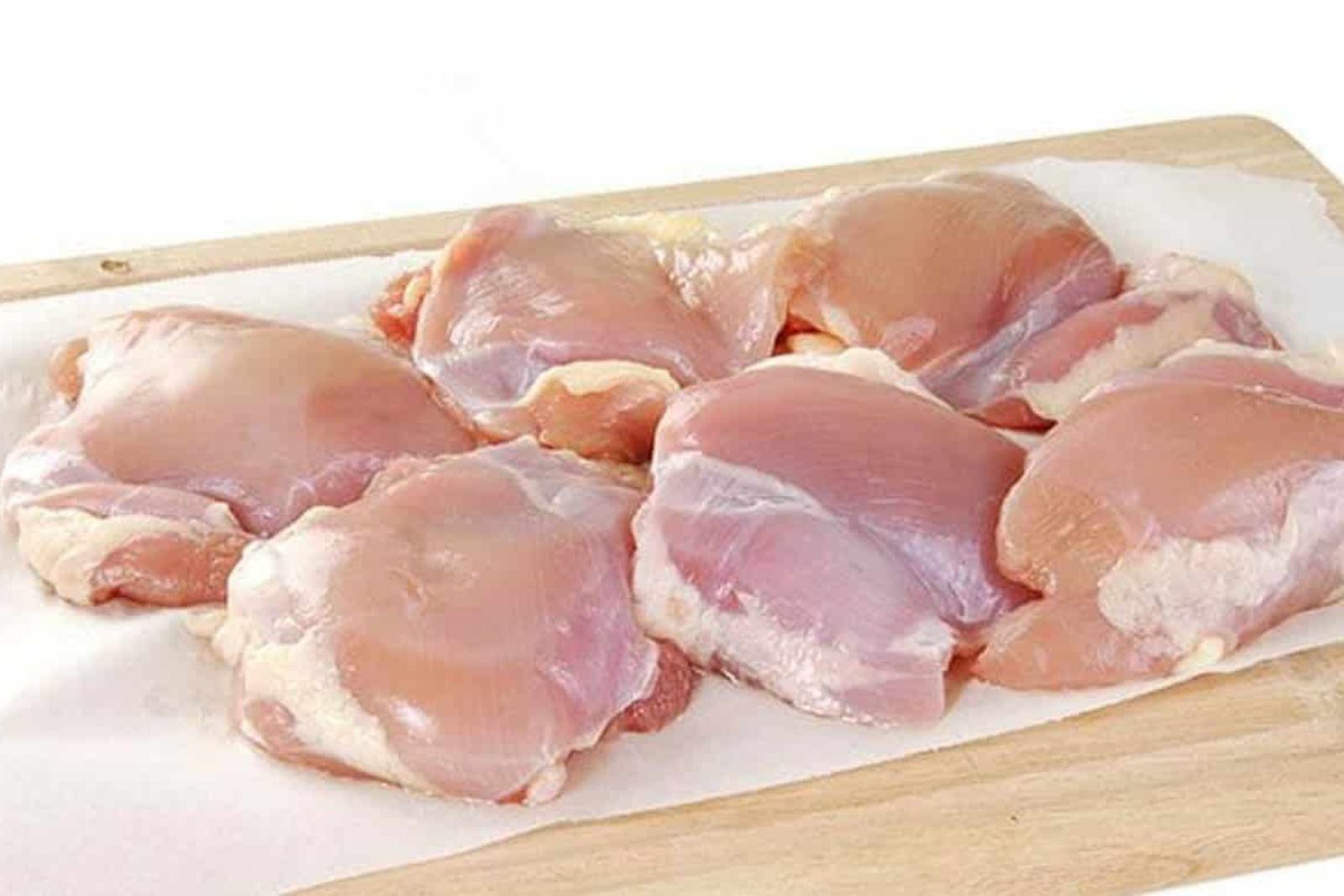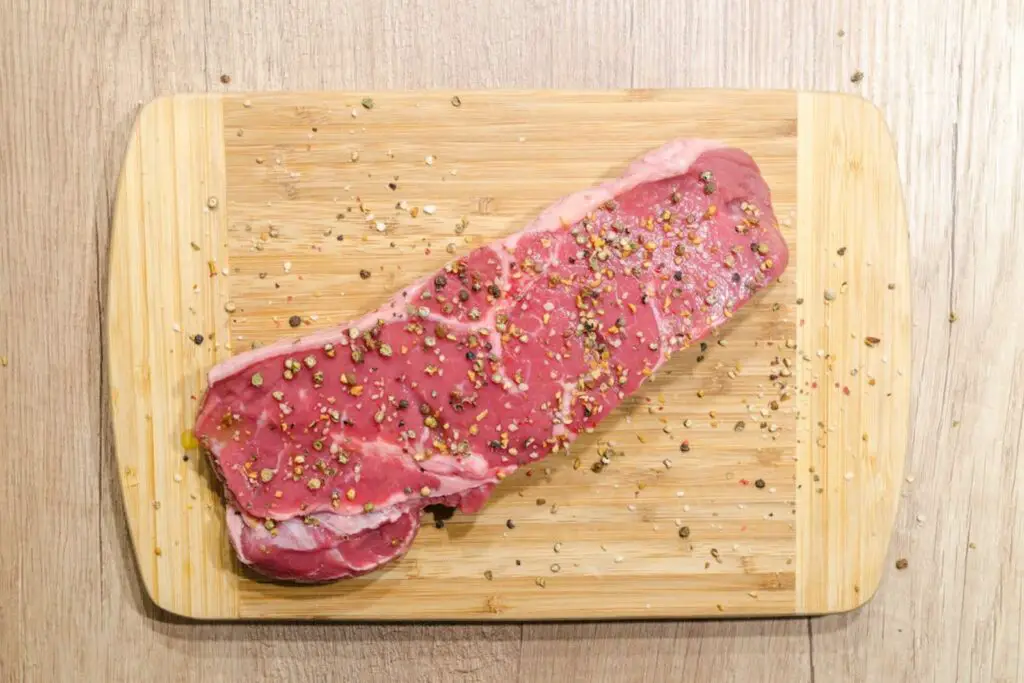
Chicken thighs, the juicy and flavorful cuts of poultry, are a popular choice for many delicious recipes. With their rich taste and moist texture, chicken thighs add depth of flavor to a wide range of dishes, from braises and stews to grilling and roasting. To make the most of their versatility and convenience, freezing chicken thighs can be a great option. By freezing chicken thighs, you can easily stock up on this protein-packed ingredient, ensuring that you always have a delicious and protein-packed option on hand for quick and effortless meals. In this guide, we will explore the best methods for freezing chicken thighs, allowing you to preserve their quality and flavor, making meal preparation a breeze.
Here’s a guide on how to freeze chicken thighs:
Step 1: Cool the Chicken Thighs
After cooking chicken thighs or purchasing them from the store, it’s important to allow them to cool down completely before freezing. This step is crucial because it helps maintain the quality and texture of the chicken thighs during freezing.
When chicken thighs are cooked, they retain some residual heat. If you place them directly in the freezer while they are still warm, the temperature difference between the hot chicken thighs and the cold freezer can lead to the formation of ice crystals. These ice crystals can damage the structure of the meat fibers and cause moisture loss, resulting in dry and tough chicken thighs when thawed and cooked later.
By allowing the chicken thighs to cool down to room temperature, you give them time to dissipate heat naturally. This gradual cooling process helps minimize the risk of ice crystal formation and preserves the moisture content within the meat.
Moreover, cooling the chicken thighs before freezing also prevents a potential safety hazard. Placing hot food directly in the freezer can raise the temperature inside the freezer, which may affect the quality and safety of other perishable items stored there. It’s important to maintain a consistent and safe temperature in the freezer to prevent bacterial growth and food spoilage.
To cool the chicken thighs, you can simply leave them on a clean plate or a wire rack at room temperature. Avoid leaving them at room temperature for an extended period, as this can promote bacterial growth. Once the chicken thighs have cooled down completely, you can proceed with the next steps of wrapping them tightly in plastic wrap and aluminum foil for optimal freezer storage.
Step 2: Portion or Leave Them Whole
When it comes to freezing chicken thighs, you have the option to either freeze them as a whole or cut them into portions before freezing. Both methods have their advantages, and your choice will depend on your preferences and intended use.
Freezing Chicken Thighs as a Whole:
If you decide to freeze the chicken thighs as a whole, it’s important to ensure they fit comfortably in your freezer bags or containers. Consider the available space in your freezer and the size of your chicken thighs when making this decision. Freezing them as a whole can be convenient if you plan to use them for roasting, grilling, or baking as a single piece. However, keep in mind that it may take longer to thaw a whole chicken thigh compared to smaller portions.
Freezing Chicken Thighs in Portions:
Portioning the chicken thighs before freezing can offer additional flexibility and convenience. By dividing them into individual or family-sized portions, you can easily thaw and use only the amount you need for a specific recipe. This method is especially useful if you frequently prepare meals that require smaller quantities of chicken thighs. Portioning also allows for quicker and more even thawing, reducing the risk of bacterial growth and ensuring even cooking.
To portion the chicken thighs, you can use a sharp knife or kitchen shears to separate them into desired sizes. Consider factors such as the number of servings you typically require, your preferred cooking methods, and the capacity of your freezer containers. If you choose this method, it’s a good practice to separate the portions with parchment paper or plastic wrap before freezing. This will prevent them from sticking together and make it easier to retrieve individual portions when needed.
Regardless of whether you freeze the chicken thighs as a whole or in portions, make sure to package them properly to prevent freezer burn and maintain their quality. Proper packaging involves using airtight freezer bags or containers, removing as much air as possible, and sealing them tightly to protect the chicken thighs from moisture loss and exposure to air. Consider the convenience, portioning needs, and ease of use when making your choice.
Step 3: Wrap in Plastic Wrap
Individually wrapping each chicken thigh tightly in plastic wrap is an important step when freezing them. This wrapping process serves two primary purposes: preventing freezer burn and protecting the meat from absorbing odors.
Preventing Freezer Burn:
Freezer burn is a condition that occurs when food is exposed to air and loses moisture during freezing. It can cause the chicken thighs to develop dry, discolored patches and a deteriorated texture. By tightly wrapping each chicken thigh with plastic wrap, you create a barrier that helps prevent air from coming into contact with the meat. This reduces the chances of freezer burn, preserving the quality and flavor of the chicken thighs.
When wrapping the chicken thighs, ensure that you cover the entire surface of each thigh with plastic wrap. Pay attention to any exposed areas and make sure they are well-sealed. The plastic wrap should be in direct contact with the meat to create a protective seal.
Protecting from Odors:
Another benefit of wrapping the chicken thighs in plastic wrap is that it helps protect them from absorbing odors from other items in the freezer. The freezer environment can contain various food items with strong aromas, and if left uncovered, the chicken thighs can absorb these odors, altering their taste and aroma. By tightly wrapping them in plastic wrap, you create an additional layer of protection against odor transfer.
Make sure to wrap each chicken thigh individually to prevent them from sticking together during freezing. This makes it easier to retrieve individual pieces when needed without defrosting the entire package.
To wrap the chicken thighs, start by tearing off a piece of plastic wrap that is large enough to completely enclose each thigh. Place the chicken thigh in the center of the plastic wrap, then bring the sides of the wrap-up over the chicken thigh, pressing firmly to ensure a tight seal. Continue wrapping until the chicken thigh is completely covered, and twist the ends of the plastic wrap to secure it in place.
Step 4: Double Wrap with Aluminum Foil
After wrapping the chicken thighs with plastic wrap, the next step is to provide an extra layer of protection by wrapping them with aluminum foil. This additional layer of insulation serves to further safeguard the chicken thighs during the freezing process and helps maintain their quality.
Insulation against Freezer Burn:
Freezer burn occurs when food comes into contact with air, leading to the loss of moisture and the formation of ice crystals. By double-wrapping the chicken thighs with aluminum foil, you create an additional barrier that helps prevent air from reaching the meat. This reduces the risk of freezer burn and helps preserve the texture, juiciness, and overall quality of the chicken thighs.
The aluminum foil acts as a protective shield, minimizing the exposure of the chicken thighs to the cold and dry air of the freezer. It helps maintain a more stable temperature around the chicken thighs, preventing rapid changes in temperature that can lead to the formation of ice crystals and subsequent freezer burn.
Enhanced Protection:
In addition to protecting against freezer burn, the aluminum foil provides enhanced protection for the chicken thighs. It acts as a barrier, preventing the chicken thighs from coming into direct contact with other items in the freezer. This is particularly important if there are strong-smelling or pungent foods stored nearby that could potentially transfer odors to the chicken thighs.
Furthermore, the aluminum foil adds an extra layer of structural support, helping to prevent the plastic wrap from tearing or being punctured during handling or storage. This ensures that the chicken thighs remain securely wrapped and well-protected throughout their time in the freezer.
When wrapping the chicken thighs with aluminum foil, make sure to cover them completely, ensuring that there are no exposed areas. Wrap the foil tightly around the plastic-wrapped chicken thighs, pressing it gently to conform to their shape. This will help create a snug and secure wrapping that effectively seals in moisture and flavor.
Step 5: Label and Date the Package
Before storing the wrapped chicken thighs in the freezer, it’s essential to label each package with the contents and the date of freezing. This simple step plays a crucial role in ensuring that you can keep track of the storage time and use the oldest frozen chicken thighs first, maintaining their freshness and taste.
- Tracking Storage Time: By labeling the packages, you create a record of when the chicken thighs were frozen. This information becomes particularly important because frozen foods have a limited storage life, and it’s important to use them before their quality starts to decline. Labeling allows you to know how long the chicken thighs have been in the freezer, enabling you to make informed decisions about their usage.
- Using Oldest First: The principle of “first in, first out” (FIFO) applies to freezer storage as well. When you label and date the packages, you can easily identify the oldest frozen chicken thighs. This helps you prioritize their use, ensuring that you consume them before the newer batches. By following this practice, you can maintain the chicken thighs’ highest possible quality and flavor.
Labeling also allows you to plan and organize your freezer better. You can stack or arrange the packages in a way that makes it easy to identify and access the chicken thighs you need without disrupting the storage of other items. It helps save time and minimizes the chances of forgetting about items that may otherwise get buried in the freezer.
When labeling the packages, use a waterproof marker or freezer-safe labels to ensure the information remains intact even in freezing temperatures. Write the contents (e.g., “Chicken Thighs”) and the date of freezing on each package. You can also include additional details, such as the portion size or any special marinades or seasonings used if desired.
Step 6: Store in the Freezer
After properly wrapping and labeling the chicken thighs, it’s time to store them in the freezer. This final step ensures that the chicken thighs are stored in a way that maintains their quality and allows for easy retrieval when needed.
- Freezer-Safe Storage Containers: To store the wrapped chicken thighs, choose freezer-safe bags or airtight containers specifically designed for freezer storage. These containers help create a barrier against air and moisture, protecting the chicken thighs from freezer burn and maintaining their freshness.
When selecting a freezer-safe bag or container, opt for those made from durable materials that are resistant to temperature changes and moisture. Ensure that they have a reliable seal to keep air out and maintain a stable environment around the chicken thighs.
- Minimize Air Exposure: When placing the wrapped chicken thighs in the storage containers, it’s crucial to remove as much air as possible. Air exposure can lead to freezer burn and affect the quality of the chicken thighs over time. Squeeze out any excess air from the bags or press the lids firmly onto the containers, creating a vacuum-like seal.
- Keeping Similar Items Together: To optimize freezer organization and make retrieval easier, group similar items together. For example, store the chicken thighs alongside other poultry or meat items. This helps maintain order in the freezer and allows you to quickly locate the specific type of food you need without having to search through the entire freezer.
Consider using dividers or arranging the packages in a stackable manner to maximize the use of available freezer space. Keep in mind that proper organization not only facilitates convenience but also reduces the risk of food items being forgotten or going unused.
- Freezer Placement: When placing the containers of chicken thighs in the freezer, try to position them in a location that maintains a consistent and appropriate temperature. Avoid placing them near the freezer door or in areas where temperature fluctuations are more likely to occur.
Additionally, make sure there is sufficient space around the containers for proper air circulation. This allows the freezer to maintain a uniform temperature and prevents any buildup of ice or frost on the chicken thighs. These measures minimize the risk of freezer burn, maintain the quality of the chicken thighs, and make them easily accessible for future use.
How long can I freeze chicken thighs?
Chicken thighs can be safely stored in the freezer for up to nine months. However, for the best quality and taste, it is recommended to consume them within three to six months. Freezing helps to maintain the nutritional value of the chicken thighs, but the longer they are frozen, the more the quality may deteriorate. To ensure optimal freshness, it’s important to package the chicken thighs properly and store them at a constant temperature of 0°F (-18°C) or below. Proper storage and adherence to recommended freezer storage times will help ensure the best quality when using frozen chicken thighs.
Other related questions
How do I thaw frozen chicken thighs?
To thaw frozen chicken thighs, there are three safe methods you can choose from. The first method is to thaw them in the refrigerator by placing the frozen thighs on a plate or a tray and allowing them to defrost slowly over several hours or overnight. The second method is to use the cold water thawing method, where you submerge the sealed package of chicken thighs in cold water, changing the water every 30 minutes until they are thawed. The third method is to use the microwave, using the defrost setting and following the manufacturer’s instructions. Whichever method you choose, it is important to cook the chicken thighs immediately after thawing to ensure food safety.
Can I refreeze chicken thighs after thawing?
It is generally safe to refreeze chicken thighs after they have been thawed, but it is not recommended for optimal quality. When you thaw chicken thighs, moisture is released, and refreezing can result in a loss of texture and taste. Additionally, repeated thawing and refreezing increase the risk of bacterial growth and foodborne illnesses. If you thaw the chicken thighs and decide not to use them, it is best to cook them thoroughly before refreezing to ensure safety and minimize quality loss.
How do I know if frozen chicken thighs have gone bad?
When assessing whether frozen chicken thighs have gone bad, there are several indicators to look out for. Firstly, check for any noticeable changes in color. If the chicken thighs have developed a grayish or brownish hue, it may indicate freezer burn or spoilage. Secondly, examine the texture. If the meat feels excessively slimy, mushy, or has a grainy texture, it is likely spoiled. Thirdly, trust your nose. If the chicken thighs emit a strong, unpleasant odor or a sour smell, it’s a clear sign of spoilage. Finally, if there are any signs of ice crystals or freezer burn patches on the chicken thighs, it is an indication that they have not been properly stored and may have suffered quality deterioration.
Can I use frozen chicken thighs with fresh ones?
It is generally not recommended to mix frozen chicken thighs with fresh ones for several reasons. Firstly, frozen chicken thighs require a longer cooking time than fresh ones, which can result in uneven cooking if combined. Secondly, the moisture content of frozen chicken thighs differs from fresh ones, affecting the overall texture and juiciness of the dish. Thirdly, the potential for cross-contamination increases when mixing frozen and fresh chicken thighs, as bacteria from thawing frozen chicken could contaminate the fresh ones.
Can I freeze chicken thighs with marinade on them?
Yes, you can freeze chicken thighs with marinade on them, but it’s important to consider the ingredients in the marinade. Marinades that contain citrus, vinegar, or other acidic ingredients can break down the texture of the chicken during freezing, resulting in a mushy texture once thawed. To avoid this, consider freezing the chicken thighs separately from the marinade and then adding the marinade just before cooking. If you do choose to freeze the chicken thighs with the marinade, be sure to wrap them tightly in plastic wrap or aluminum foil and store them in an airtight container or freezer bag to prevent freezer burn.
Can I freeze bone-in chicken thighs?
Yes, you can freeze bone-in chicken thighs. Freezing bone-in chicken thighs is a common practice and helps to preserve their flavor and texture. The bones can add additional flavor to dishes when cooked, and freezing them with the bones intact does not impact their quality or safety.
Do I need to season chicken thighs before freezing them?
No, you don’t need to season chicken thighs before freezing them, but you certainly can if you want to save time later. If you do season the chicken before freezing, keep in mind that the flavors may intensify during the freezing process. For best results, consider freezing unseasoned chicken thighs and then seasoning them just before cooking. This allows for greater flexibility and control over the final flavor of the chicken.
Can I freeze chicken thighs raw or cooked?
Yes, you can freeze chicken thighs raw or cooked. Freezing raw chicken thighs is a great way to preserve them for future use while freezing cooked chicken thighs is a convenient way to store leftovers. Whether raw or cooked, it’s important to ensure that the chicken thighs are properly wrapped and stored to prevent freezer burn and maintain quality. When thawing, be sure to follow proper food safety guidelines to prevent foodborne illness.








